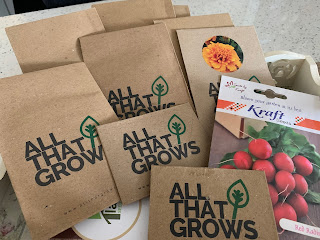Baked Stuffed Chicken Summer Squash
If fun when you can get some fresh organic stuff from the farm and turn it into something amazing. Here one of my favorites from our Tiny Farm Large Life
Ingredients
1 Round squash,
1/4 Red bell pepper
2 tbs corn kernels
1/4 Cup boiled shredded chicken
1/2 Tomato
1/2 Cup cooked rice
1/4 Cup cheddar cheese
I tbs Butter
1/2 tsp Powdered garlic
2-3 Crushed fresh basil leaves
Olive oil
Feeds: 1 Squash per person
Method
Outer Shell
Cut the top of the squash in such a way that it forms a cap for the squash. Scoop out the seeds from inside leaving the fleshy sides. Now brush the inside and outside of the summer squash with olive oil and sprinkle some salt on it. Set this aside to bake at 250 degrees for about 30 minutes.
Stuffing
Mix all the remaining ingredients, which include cooked rice, finely chopped bell pepper, chicken, corn kernels, tomato, and cheese. Add the garlic powder, fresh basil leaves, and salt to taste and mix well.
Stuff all into the other shell cover with the cap and continue to bake for another 30 minutes at 250 degrees.
Yum baked stuffed summer squash is ready
If fun when you can get some fresh organic stuff from the farm and turn it into something amazing. Here one of my favorites from our Tiny Farm Large Life
Ingredients
1 Round squash,
1/4 Red bell pepper
2 tbs corn kernels
1/4 Cup boiled shredded chicken
1/2 Tomato
1/2 Cup cooked rice
1/4 Cup cheddar cheese
I tbs Butter
1/2 tsp Powdered garlic
2-3 Crushed fresh basil leaves
Olive oil
Feeds: 1 Squash per person
Method
Outer Shell
Cut the top of the squash in such a way that it forms a cap for the squash. Scoop out the seeds from inside leaving the fleshy sides. Now brush the inside and outside of the summer squash with olive oil and sprinkle some salt on it. Set this aside to bake at 250 degrees for about 30 minutes.
Stuffing
Mix all the remaining ingredients, which include cooked rice, finely chopped bell pepper, chicken, corn kernels, tomato, and cheese. Add the garlic powder, fresh basil leaves, and salt to taste and mix well.
Stuff all into the other shell cover with the cap and continue to bake for another 30 minutes at 250 degrees.
Yum baked stuffed summer squash is ready





















